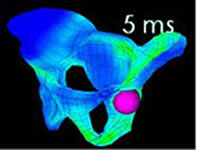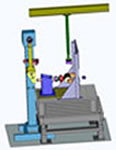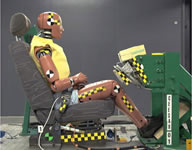CEESAR
Centre Européen d’Etudes de Sécurité et d’Analyse des Risques
Institution :
The European centre of studies on safety and risk analysis, or Centre Européen d’Etudes de Sécurité et d’Analyse des Risques - (CEESAR) , is a non-profit making organization established under French Law in 1992 following a call for the « Vehicle and road safety » program in the PREDIT I framework (research and development program for innovation and technology in road transport).
CEESAR is managed by a Delegate General and administered by a Board of Directors with the support of a Scientific Committee for ethical issues.
CEESAR's objectives are:
• To exchange knowledge and expertise for the improvement of road safety
• To carry out research and experimental testing to reduce accident risks and limit casualties
• To perform biomechanical studies to analyze human body and dummy behaviour during impact
The Experimental Pathology and Biomechanics department is a key biomechanics research department in Europe and combines a large range of skills to meet biomechanical research requirements: medicine, mechanics, data analysis, experimentation and modelling.
Research aims to define both mechanical behaviour and injury criteria on human subjects and crash test dummies. The results contribute directly to the improvement of safety assessment tools, such as dummies, models and their criteria. The technical expertise of the department is shown by a strong collaboration with French car manufacturers and suppliers and by regular publications at international conferences.
Role in the project:
CEESAR is mainly involved in the development of positioning and personalizing method. CEESAR is workpackage leader of WP3: Positioning and personalization methods and tools. Objectives is to define methods to deform a human body model, according to postioning and/or personalizing targets defined in WP2 (Predictors of posture and shape)
Team:
Erwan JOLIVET has obtained his Ph.D. at Ecole Nationale Supérieure d’Arts et Métiers in the field of biomechanics. He owns experience in biomechanical human body modelling; in particular in the development of methodology for patient specific finite element model, based on the exploitation of medical images. He has been involved in project VPHOP (FP7) and project 3D-QCT of Osteoporotic (FP5). He participated in 19 publications in international referred journal.
 |
 |
 |
| Biomechanics 3D Injury Mechanism | Biomechanics 3D Test Device Conception | Test Biomechanics |
